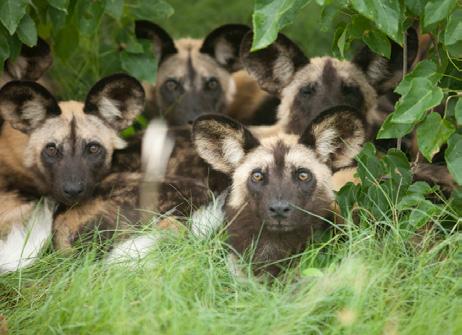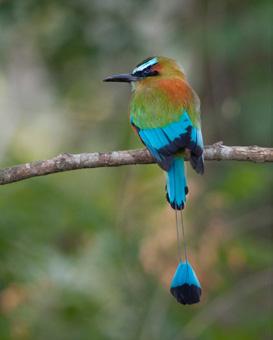
6 minute read
LENSES
ALL-PURPOSE LENSES
An all-purpose lens is generally one that covers the entire spectrum of focal lengths, from wide angle to telephoto. That is, you can take a photo of a group of people in front of you one second and then zoom all the way in to take a photo of a bird in a tree the next. Plus, you can do all this without moving very much, which can be especially helpful when photographing travel experiences where you could be confined to a nature trail, boardwalk to vehicle. While one may initially feel that this multi-purpose lens is the ideal scenario, there can be drawbacks.
Pros: excellent flexibility allowing for a variety of shots; no time needed to change lenses; less to fuss with.
Cons: heavier than most other types of lenses; can sacrifice quality of photos; oftentimes they are expensive to get comparable quality of something less multi-purposed.
Prime Lenses
“Primes,” as they are often called, are the exact opposite of an all-purpose lens. They have a “fixed focal length” such that they cannot zoom. This means that if you are too close to your subject, you have to back up. Too far? Get closer. For someone not used to prime lenses, this seems to be an unacceptable drawback. But, for those who are perfectionists in their photography, prime lenses offer the very best in terms of the quality of the resulting photo. In addition, because of fewer working parts, they are often lighter and sometimes even less expensive. However, because of their “pro-level” quality, what money is saved by not having the zoom feature is often re-invested into the quality of the glass and components used. Thus, the result is a superior lens.
Lastly, these lenses often offer the widest apertures, allowing for low-light photography and/or beautiful background blur (aka, bokeh).
If you’re looking to experiment with a prime lens, the one that most people start with is a 50mm f/1.8 or f/1.4. Try one out and you will be amazed at the results.
Pros: high-quality lens for extremely sharp photos; because of fewer parts, great value for money; ability to get very wide apertures not possible with other lenses.
Cons: limited flexibility when subject is too near or too far; less versatile than most other lenses.
WIDE-ANGLE ZOOM
This is the most common lens out there, and it comes as part of many camera kits. It allows you to get wide-angle shots, along with a little bit of zoom, all in one nice and tidy package. Typical focal lengths are 18-55mm, 24-70mm and 24-105mm. While these won’t allow you to zoom in on an eagle sitting in a tree across the river, they are wonderful “walking around” lenses. They are ideal for cultural and people photography, landscapes and scenic photography, indoor photography, and even macro photography. An added bonus is that they are usually quite small and very convenient when doing things outdoors (e.g., hiking while it’s around your shoulder or neck, keeping it at the top of your backpack for quick access, etc.)
Because these have a more limited focal-length range compared to the multi-purpose lenses discussed previously, they are often either better quality, less expensive, or better in low light. Remember, it’s hard to have all three in one lens, but by reducing your versatility, as demonstrated with the prime lenses, you can get pretty close to having your cake and eating it too with these lenses. Like all things camera-related, there is a significant range of qualities available in this highly-used category of lenses.
Pros: excellent combination of versatility, value, size and weight; an ideal lens to have on your camera when you don’t know exactly what you’ll come across in a city or on a trail.
Cons: not many, a lens that should be in everyone’s bag. But if there are any, it’s that the top-quality ones can get very expensive very quickly.
ULTRA-WIDE ANGLE
These lenses would still fall into the “specialty” category, as they are usually something one will acquire after all other basic lens needs are met. However, if you are a dedicated landscape photographer, or you do a lot of indoor photography, you may wish to pick one of these up sooner rather than later.
They are incredibly helpful for nighttime, aurora borealis, or star photography, as they allow you to capture a good bit of the night sky.
Typical focal ranges are 10-22mm, 14-24mm, 16-35mm and 17-40mm, and which one you select depends heavily on whether you have a crop-frame or full-frame camera. We go over this more in the camera section, but you must multiply the focal length by 1.4 or 1.6 on crop-frame cameras to get the actual focal length due to the smaller sensor size. Thus, getting a 10-22mm on a crop-frame is like getting a 16-35mm on a full-frame. We won’t go too much into this here, but it’s just important to keep this in mind, because with ultra-wide lenses, every millimeter wider will a) cost you more money and b) allow you to shoot even more of your landscape.
Since these lenses go to the extreme wide end of the spectrum, it’s highly unlikely that you’ll find one that allows too much versatility. That is, the limited amount of zoom is really only helpful in composing your shot, not to zoom in on an animal or specific landscape feature too much. Thus, while amazing for big scenic landscapes or skies and tight quarters when indoors, they fall outside of the “all-purpose” category and are truly a specialty lens. Nevertheless, they are a wonderful and welcome component to any outdoor photographer’s bag.
One added and unique bonus to these lenses is the ability to take wideangle macro shots. The effect of getting a wildflower or other small flora or fauna up close with mountains and sky in the background is quite pleasing. A normal macro lens would really only allow you to photograph the subject itself, with minimal background. However, because of the close minimum focusing distance on these lenses, you can get quite close to your subject, but then give it an ultra-wide perspective to incorporate much of the surrounding environment.
Pros: ideal for vast landscapes, sky photography and photography that takes you indoors. Also offer interesting perspective for macro photography.
Cons: a specialty lens with specific purposes; can be costly.
Zoom Telephotos
Another must for any nature and wildlife photographer, these lenses are multi-purposed and offer excellent abilities to zoom in on your subject, whether it be a moon rising on the distant horizon or a zebra in the African savanna. Traditional focal lengths are 70-200, 70-300, 55-250, 200-400 and 100-400. As with all lenses, the wider the range (eg, 100-400), the more versatility you have to compose and frame your shot. However, the drawback is that such flexibility will either cost you in dollars or maximum aperture width (which translates into low light sensitivity, fast shutter speed, and background blur).
For example, the Canon 100-400mm is a fantastic focal range. However, its aperture is f/4.5 – 5.6, meaning that as you zoom from 100 to 400mm, the maximum width of the aperture goes from f/4.5 to 5.6. Now, compare that to the 70-200mm lens made by Canon. For the same price tag, you can get a constant f/2.8 throughout your zoom range. In the world of photography, this is huge. The ability to keep such a wide aperture constant and all the way to 200 is quite a luxury.
So, what you lack in total zoom with the 70-200mm, you gain in aperture, which translates to faster shutter speeds and better abilities in lower light. And with that wide aperture, you also get excellent background blur.
With all things in lenses, there are trade-offs. And nowhere are these tradeoffs more apparent than in this class of lenses – the zoom telephotos. The ideal zoom telephoto has excellent range, optical quality, and a low f-stop. While a compromise is indeed achievable, it often comes at a higher price tag. Otherwise, you’ll have to decide for yourself which of the main tenets you prioritize and what you’re willing to sacrifice—zoom range, quality or a wide aperture.
Pros: an essential lens for every nature and wildlife photographer; it allows you to zoom in for the perfectly composed shot of relatively distant subjects.
Cons: often involves a compromise between quality, zoom range, aperture, and price.
Super Telephoto
These are the big daddy lenses that make you look like you’re carrying a bazooka. However, the resulting photos are truly stunning and their capabilities are unmatched.

While these lenses have a specific purpose and all in all are quite limited in what they can do, what they can do is zoom in on a faraway subject (generally one that is not easily approachable) and make it fill the frame of your camera. It might sound like small potatoes, but this seemingly simple task makes these lenses some of the most coveted in the world of wildlife and nature photography.
Examples of these lenses are the prime 400mm, 500mm, and 600mm lenses. The wonderful thing about these lenses made by top lens manufacturers like Nikon and Canon is that not only do they allow you to get in close on hard-to-photograph animals, but they are some of the sharpest and highest quality lenses in their lineups. What’s more is that they usually offer some of the widest apertures available, meaning that you can produce a wonderful background blur and shoot in low light, which are both excellent for wildlife photography.
So, what’s the catch, you’re asking? Well, they are quite expensive compared to most other lenses – often in the high four-figure range.
Pros: extremely high quality and the ability to get photos of elusive, skittish, or just plain far away animals. A wide aperture allows for incredible flexibility with low light, as well as fast shutter speeds, which can be critical for fast-moving animals (i.e., African safaris).
Cons: has very specific purposes; a high price tag










